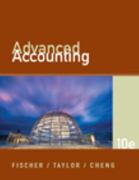Question
QUESTION 1 The Eastern University Business School (B-school) teaches some undergraduate business courses for students in the Eastern University College of Arts and Science (CAS).
QUESTION 1
The Eastern University Business School (B-school) teaches some undergraduate business courses for students in the Eastern University College of Arts and Science (CAS). The 6,000 undergraduates generate 2,000 undergraduate student course enrollments in business courses per year. The B-school and CAS are treated as profit centers in that their budgets contain student tuition revenues as well as costs. The deans have discretion to set tuition and salaries and determine hiring as long as they operate with no deficit (revenues = expenses). Each student takes eight courses per year whereby the total undergraduate tuition fees are RM12,000 per year. Average undergraduate financial aid amounts to 20% of gross tuition. The current transfer price rule is gross tuition per course less average financial aid.
This transfer price rule gives net tuition to the B-school as a revenue and deducts an equal amount from the CAS budget. The CAS dean argues that the current system is grossly unfair. CAS must provide costly services for undergraduates to maintain a top-rated undergraduate program. For example, career counseling, academic advising, sports programs, and the admissions office are costs that must be incurred if undergraduates are to enroll at Eastern. Therefore, the CAS dean argues, the average cost of these services per undergraduate student course enrollment should be deducted from the tuition transfer price. These 6,000 undergraduates incurred student services at a total of RM9.6 million per year.
Required:
a. Calculate the current revenue the B-school is receiving from undergraduate business courses. What will it be if the CAS dean's proposal is adopted? (8 marks)
b. Discuss the pros and cons of the CAS dean's proposal. (8 marks)
c. As special assistant to the B-school dean, prepare a response to the proposed tuition transfer pricing scheme. (8 marks)
[Sub-total : 24 marks]
QUESTION 2
Prior to 1997, PepsiCo, a major soft drink company, had a restaurant division consisting of Kentucky Fried Chicken, Taco Bell, and Pizza Hut. The only cola beverage these restaurants served was Pepsi. Assume that the major reason PepsiCo owned fast food restaurants is an attempt to increase its share of the cola market. Under this assumption, some Pizza Hut patrons who order a cola at the restaurant and are told they are drinking a Pepsi will switch and become Pepsi drinkers instead of Coke drinkers on other purchase occasions. However, studies have shown that some customers refuse to eat at restaurants unless they can get a Coke.
PepsiCo sells Pepsi Cola to non-PepsiCo restaurants at RM0.53 per gallon. This is the market price of Pepsi-Cola. Pepsi-Cola?s variable manufacturing cost is RM0.09 per gallon and its total (fixed and variable) manufacturing cost is RM0.22 per gallon. PepsiCo produces Pepsi-Cola in numerous plants located around the world. Plant capacity can be added in small increments (e.g., a half-million gallons per year). The cost of additional capacity is approximately equal to the fixed costs per gallon of RM0.13.
Required:
What transfer price should be set for Pepsi transferred from the soft drink division of PepsiCo to a PepsiCo restaurant such as Taco Bell? Justify your answer. You are to consider the transfer price in the presence of divisional interdependencies.
[Sub-total : 24 marks]

Step by Step Solution
There are 3 Steps involved in it
Step: 1

Get Instant Access to Expert-Tailored Solutions
See step-by-step solutions with expert insights and AI powered tools for academic success
Step: 2

Step: 3

Ace Your Homework with AI
Get the answers you need in no time with our AI-driven, step-by-step assistance
Get Started


